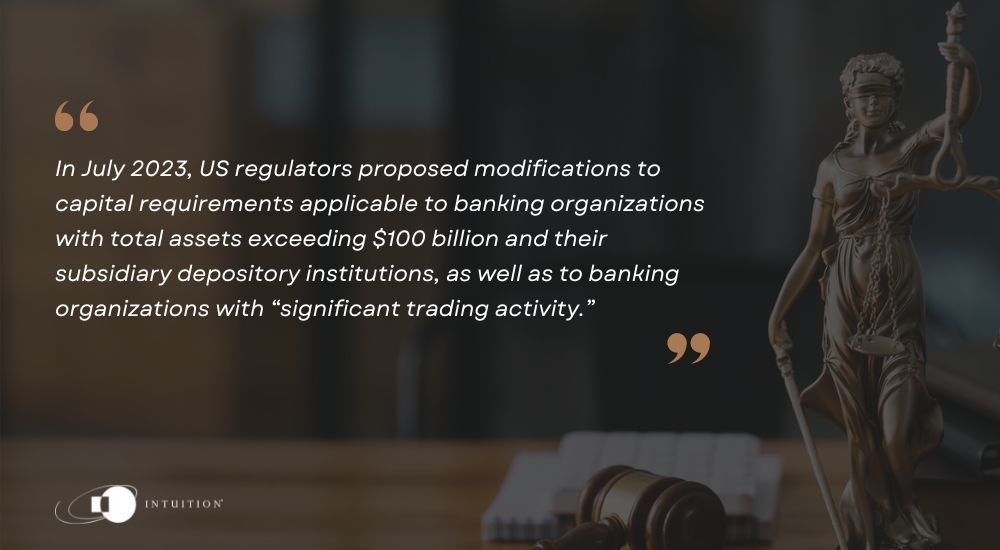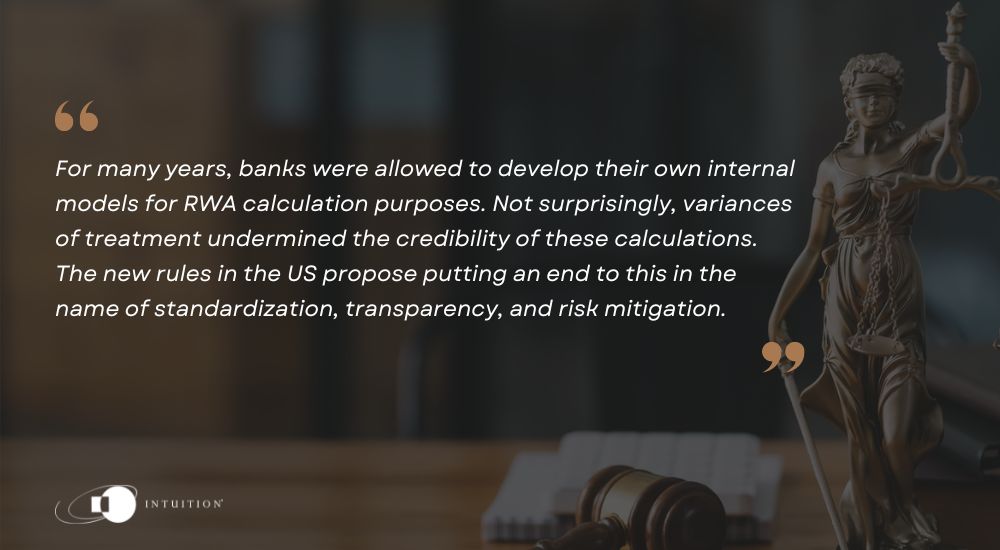Endgame for US Basel III negotiations
The shockwaves from the Global Financial Crisis (GFC) are still apparent, at least in the sphere of regulation, with the US banking industry currently engaged in an unprecedented lobbying campaign against proposed new rules to Basel III – Basel IV or the so-called “Basel Endgame”.
In July 2023, US regulators proposed modifications to capital requirements applicable to banking organizations with total assets exceeding $100 billion and their subsidiary depository institutions, as well as to banking organizations with “significant trading activity.”
The measures were designed to put into effect both the Basel III reforms published by the Basel Committee for Banking Supervision (BCBS) in December 2017 and other reforms of the market risk framework in January 2019. The changes proposed by US regulators, however, are “super-equivalent” to BCBS rules. In other words, they are tougher than the reforms published by the BCBS, even though the US is represented on the BCBS and agreed to what the Committee published.
[Basel III, Basel IV, Basel III Endgame, & Basel 3.1: Terminology Explained]

Proposed changes to RWA calculation upset large US banks
Of particular concern to the large US banks are proposed changes that would significantly increase the allocation of risk-weighted assets (RWAs) for operational risk. RWAs are calculated by applying a risk-weighting to banks’ assets – broadly speaking, their loan books.
Bank capital ratios are calculated using the RWA figure as the denominator. In other words, banks wishing to comply with capital ratio requirements have an interest in calculating an RWA figure as large as possible.
For many years, banks were allowed to develop their own internal models for RWA calculation purposes. Not surprisingly, variances of treatment undermined the credibility of these calculations. The new rules in the US propose putting an end to this in the name of standardization, transparency, and risk mitigation.
According to the affected banks, the increases in capital requirements that will arise from the proposals will be onerous and put them at a competitive disadvantage to international rivals. They – and some commentators – argue that the capital buffers built up by the banking sector in the years since the GFC are more than sufficient.

GFC continues to cast long shadow
Smaller banks (which are not subject to the proposed measures) have a different view, pointing to the threat of systemic meltdown and bank bailouts in 2008 as a major factor supporting additional regulation for their larger peers. Other observers echo these concerns, pointing to record stock repurchases and dividend payments by large banks in recent years – elective measures that have resulted in capital depletion – as a cautionary sign that banks could be becoming complacent again.
One of the business lines most affected by the proposed changes is proprietary trading, which will be subject to greatly increased risk ratios. This is not by accident: regulators believe that banks have seriously underestimated market risk in the past.

Bankers’ concern over pay
For critics, the trenchant objections put forward by bankers to the new proposals are self-serving. Any increase in capital requirements by extension reduces return on equity (ROE). Given that ROE is the metric usually used to determine pay and bonuses, bankers are upset at the prospect.
The proposed changes are due to be phased in over a three-year transition period, with any final rule not expected to take effect until July 1, 2025. Taking the effective date and transition period together, the capital requirements under a final rule would not be fully effective until the second half of 2028.
In the meantime, negotiations around a watering down of the measures continues with the possibility of legal action not being ruled out.
Intuition Know-How has a number of tutorials relevant to the content of this article:
- Basel III – An Introduction
- Basel III – Pillar 1 & Capital Adequacy
- Basel III – Pillar 2 & ICAAP
- Basel III – Pillar 3 & Risk Reporting
- Basel III – Liquidity & Leverage
- Regulation – An Introduction
- Banking Regulation – An Introduction


